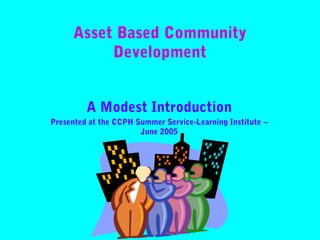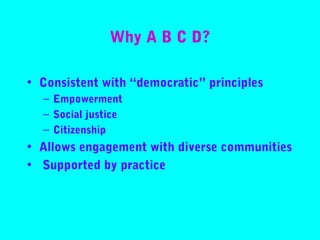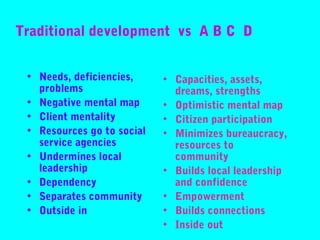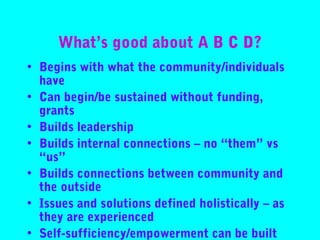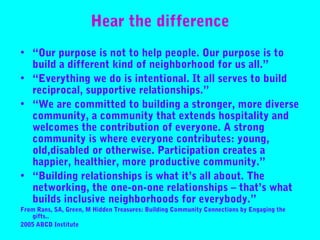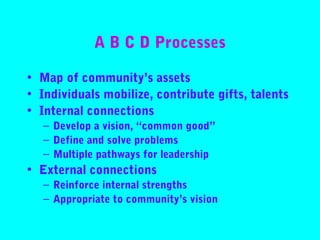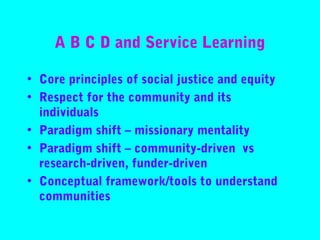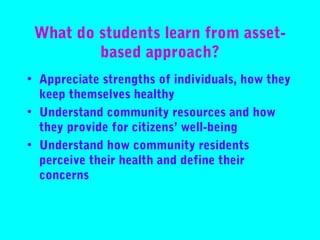This document provides an introduction to Asset Based Community Development (ABCD). It explains that ABCD focuses on community strengths and assets rather than needs and problems. Traditional development models take a "outside in" and deficient approach while ABCD takes an "inside out" and asset-based approach. ABCD empowers communities by mobilizing local talents, skills, and resources from within. It builds leadership and connections between community members and organizations to develop sustainable solutions to issues defined by the community. The principles of ABCD include taking an asset-based, participatory, relationship-driven and internally-focused approach to community development.
